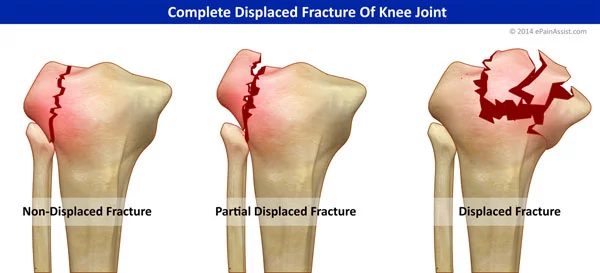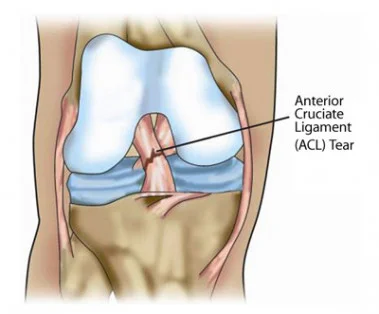Knee Pain – When Do I Need to See a Doctor
As one of the common problems, knee pain occurs in any bony structure that consists of the knee joints (fibula, femur, tibia), the ligaments, the kneecap and cartilage. It is normally caused by intense physical activities, obesity, damages to the surrounding muscles or various foot injuries. Gone are the days when knee pain was associated with the age. Nowadays, it is found in all ages due to some nutritional deficiencies and carelessness towards health.
Knee Pain Signs and Symptoms
Because of the lack of awareness, most of the people are unable to identify whether they are having knee pain or not. Sometimes, there is an inflammatory process or infection causing the knee to become painful and swollen while a fracture or torn meniscus refer to a particular body part. If someone is having a baker cyst, then it’s evident that they are having pain at the back of the knee. Its severity also varies in every case- from minor to disabling and even severe pain.
Other than that, here are some of the symptoms found by the orthopaedic surgeons:
· Instability in the knee causing difficulty in walking and bearing weight
· Discomfort leading to limping
· Damages to ligament is disturbing up and down movement
· The knee does not bend
· Swelling and redness
· Need to use the opposite knee for controlling weight
Causes of Knee Pain
Based on the severity, knee joint pain is categorised as follows:
· Acute Injury: Meniscal tear, broken bone, torn ligament
· Medical Issues: Infections, osteoarthritis (OA), rheumatoid arthritis
· Overuse/Chronic Conditions: Chondromalacia, tendinitis, bursitis, osteoarthritis, patellar syndromes and IT band syndrome.
Let’s now have a look at each of them individually:
Acute Knee Injuries
1. Fracture: If any of the knee bone is weak, it may be easily broken by direct trauma. The condition is not only painful and hurting but would also affect the functioning of the knee, particularly if kneecap is fractured.
However, in tibial plateau fracture, it’s quite difficult for patients to bear their body weight. Since the fracture is non-curable with simple sport medicine or physical therapy, it’s crucial to visit a professional surgeon in order to detect injuries and find out possible treatments.
2. Ligament Injuries: The commonly occurred ligament injury is called Anterior Cruciate Ligament (ACL) that is found in sport enthusiasts or athletes because of their continuous efforts/workout requirements and sudden change in directions.
This problem needs immediate attention of a sports doctor so that it can be treated accordingly. Other than that, other ligament injuries include lateral collateral ligament, medial collateral ligament and posterior cruciate ligament.
3. Meniscus Injuries: Lateral and medial (the menisci) are the important parts of cartilage that are responsible for absorbing shock between the knee bones. If twisted improperly, the meniscus would be damaged and caused severe knee pain.
4. Dislocation: When the knee is dislocated, there is no other option but to visit an orthopedic surgeon as it affects blood circulation to the leg followed by various other problems. This injury normally occurs when the knee is hit with a lot of force, especially in a motor vehicle accident.
Medical Issues
1. Rheumatoid Arthritis: As an autoimmune problem, this type of arthritis can affect any body joint, thus reducing overall movement and functionality. For a sportsman, it would affect sports performance because of severe pain, swelling and instability.
2. Gout: Commonly found in big toe, gout is known for affect the knee joints as well. It flares up and causes a lot of pain when at acute level.
3. Infectious Arthritis (Septic Arthritis): As the knee joint gets infected, the patient suffers from fever, pain and swelling. Drainage treatments and antibiotics are the recommended options to cure this problem, instead of going for a knee surgery.
Overuse/Chronic Conditions
1. Patellar Tendonitis: It is an inflammation in the tendons that are responsible for connecting the patella (kneecap) to the lower part of leg. It is found in individuals who are involved in heavy and repeated activities, particularly exercises.
2. Patellofemoral Pain Syndrome: This chronic knee pain is caused by stress or degeneration under the patella (kneecap) at a point where it connects with the thighbone. This pain is common in cyclists and runners.
3. Osteoarthritis: Wear and tear in the cartilage due to age and frequent use.
When to Call an Orthopaedic Surgeon?
It’s not necessary that every pain can be treated with rest and usual medications. Sometimes, people ignore this regular knee pain and end up having severe problems after some time. Even, they do not tend to be paying attention to signs and symptoms in the knee joints that doctors suggest to take seriously and respond right away. Whether there is deformity, difficulty in walking, swelling, fever, pain or inability to bend, it’s better to see a doctor before any of the above problem would arise.




